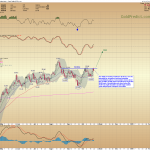When China moved to devalue the yuan on August 11, there was some debate about whether the PBoC was acting to promote renminbi internationalization (thus bolstering Beijing’s IMF SDR bid) or simply attempting to play catch up in the global currency wars.
When you’re the engine of global growth and trade and you’re an export-driven economy, just about the last predicament you want you find yourself in is a situation where your REER is appreciating by double-digits because you’re pegged to a surging currency (yes, that’s right, sometimes a better “REER” is a bad thing). Add in the fact that your trading partners are engaged in a global currency war and you have yourself a decidedly untenable scenario.
So, China fired what was perhaps the loudest shot across the bow to date in the ongoing worldwide FX melee and indeed, quite a few analysts and commentators think we haven’t seen anything yet. The ubiquitous of “people familiar with the matter” think Beijing may be targeting a 20% devaluation by the time it’s all said and done.
Still, trillions in DM QE has failed to revive aggregate demand and indeed, lackluster global trade seems to be the new normal, and the weakness appears to be structural and endemic rather than cyclical and transitory. China’s hard landing is both a cause and a symptom of this and given that, it’s not clear that a deval of any size will be enough to jump start the Chinese growth engine.
Throw in the fact that declining purchasing power (for a citizenry that’s already rattled thanks to social tension and an absurdly volatile stock market) invariably leads to import contraction and one might reasonably suspect that trade data out of China will disappoint for the foreseeable future even if the whole “let’s pray for terrible-er-er imports so the current account doesn’t look too bad” helps the optics.


















Leave A Comment